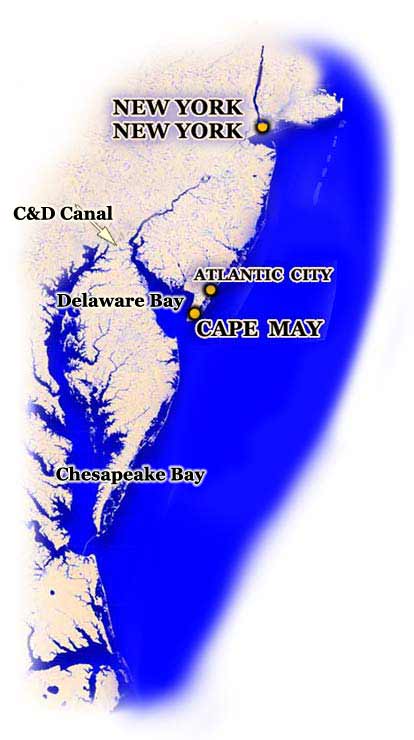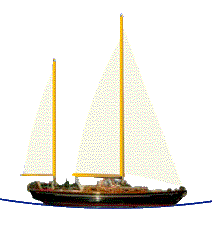



CLICK ON UNDERLINED BLUE TEXT FOR PHOTOS
Ships Log November 10-12, 2005 Jamestown and Hampton, VA
The Hampton Public Marina is situated in the heart of the small old town. St. John's Church is nearby. Established in 1610, this is the oldest continuous Anglican Parish in America. This fourth church on the site was constructed in 1728 .
The marina is located next to the Cousteau Society Center which house many of that organization's old tools such as a rhino scarred Jeep and several inventive diving apparatuses. (Photo#2 )
Years ago we used to love to watch Jacques Cousteau and his great sea adventures. Being a filmmaker and sailor, he was a terrific inspiration to us. So when we had the opportunity to get a Cousteau Society Red Cap we had to get one.
The best saloon/restaurant within walking distance is Milemarker 20. Milemarker 20 provides you the feeling that you've spent your holiday in Cyprus or in Australia with its fantastic international cuisine. Great chowder and crabcakes! The Space Center, with an IMAX theater, is also on the docks.
The following morning, it was a beautiful, sunny day with temperatures in the 70's. The Fall colors were at their peak. We decided to rent a car to visit the first permanent English colony on the east coast - Jamestown (The Pilgrims in the Mayflower didn't arrive until 1620). There is so much happening around Jamestown right now: the 400th Anniversary is coming in 2007, a reenactment voyage is scheduled, and a major motion picture by Terrence Malik called "New World" about the founding of Jamestown is about to be released. There is also an ongoing archeological dig that has recently discovered the bones of the Captain of the Godspeed and the foundation for the original fort the colonists built.
The Virginia Company, much like the Dutch East India Company, saw the new world as an economic enterprise and expected a quick treasure. On April 1607, 3 ships - the Sarah Constant, Godspeed, and the Discovery, containing 104 men and boys, arrived in Virginia. It was an unlikely group of people to start a colony. Most of them didn't have the skills to fend for themselves. They were aristocrats, jewelers, tailors or people of similar professions. After nine months, only 38 of the original had survived. John Smith was one of these.
Smith was born in England, the son of a farmer, and became a soldier of fortune, fighting for the Dutch against the Spanish and then enlisted with Austrian forces fighting in Hungary. He was captured by the Turks. He later escaped from slavery, returned to England and became involved with the Virginia Company. Once in Jamestown, he was enlisted to take a small boat, a shallop, on a four month exploration of the Chesapeake. Smith was a Renaissance man - an explorer, survivalist, slave, ethnographer, cartographer and a natural leader. In the fall of 1608, he was elected president of the colony. During his year long presidency, the colonialists strengthened the fort, built a church, storehouse, 40 or 50 houses, a fresh water well, and planted one hundred acres of corn. Smith believed the colonists were lazy and is famous for his remark "He who does not work, will not eat."
We have all heard the song "Fever", sung by Peggy Lee:
Captain Smith and Pocohantas Had a very mad affair
When her daddy tried to kill him She said, "Daddy, oh don't you dare.
He gives me fever, with his kisses Fever, when he holds me tight
Fever, I'm his missus Oh Daddy, won't you treat him right
Historians seem to agree that Captain John Smith and the very young Pocahontas were not romantically involved, but people prefer to believe the popular myth perpetuated in song and movies. Of course, Pocahontas was famous in her own right as the daughter of Chief Powhatan. She was a child of privilege in the Powhatan Empire and gave the English crucial assistance besides befriending Smith. He credited her with saving the colony. Pocahontas ended up marrying another Englishman, John Rolfe, and traveling to England where she met the Queen and later died before returning home.
We arrived in Jamestown and went to see the replica ships . The ships seemed so small and hard to imagine that so many people had traveled in them. The sleeping births were under 5 feet in length. The buildings within the Fort are exact recreations of the originals. People in period dress are engaged in actual work such as food preparation and building construction. Separately, the foundations of the original buildings can be seen. The church is the site of the first representative assembly of the New World in July 1619.
In another area, there is a working glassblowing shop. We were glad we took the time to visit this historic site.
v